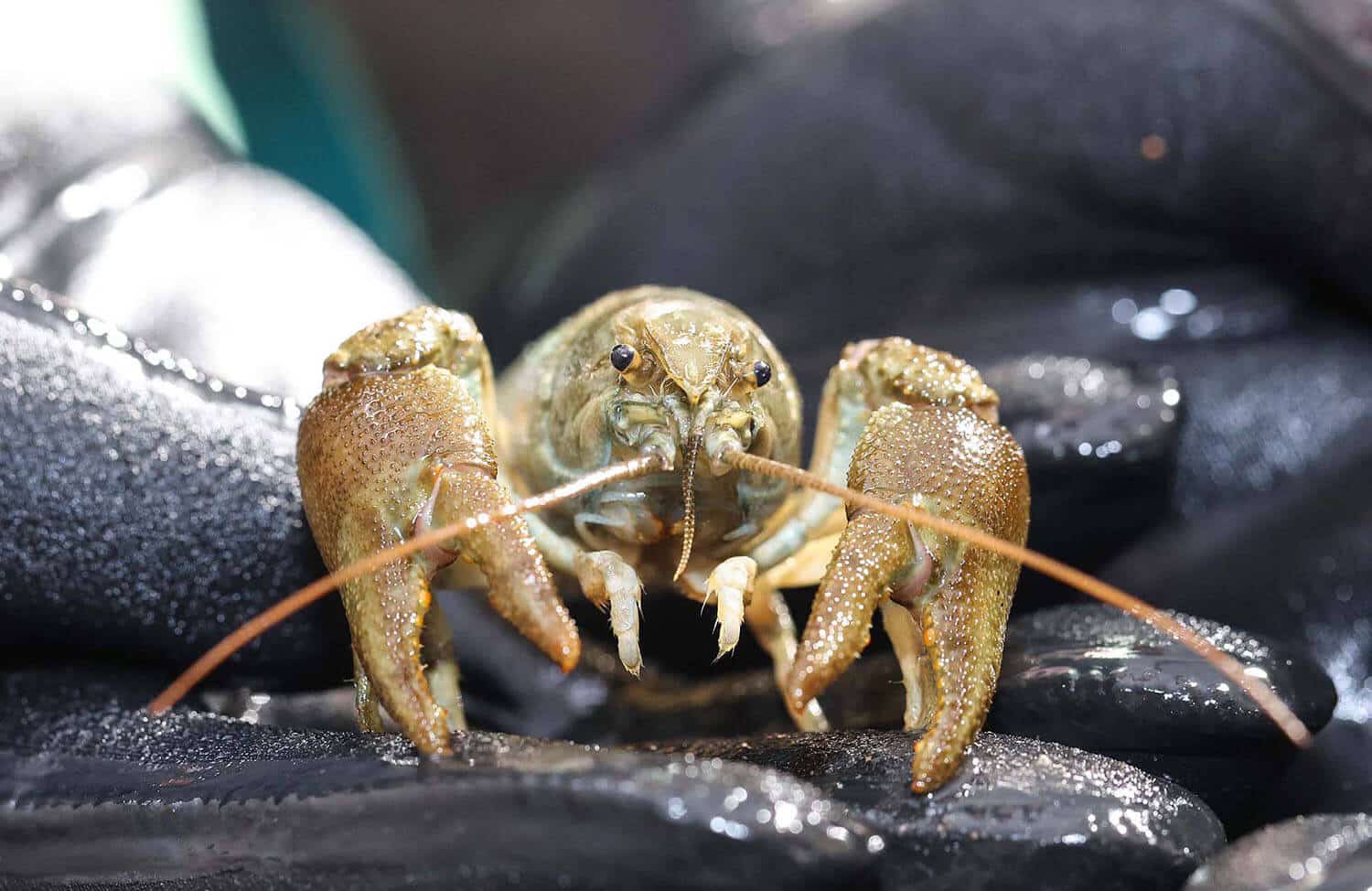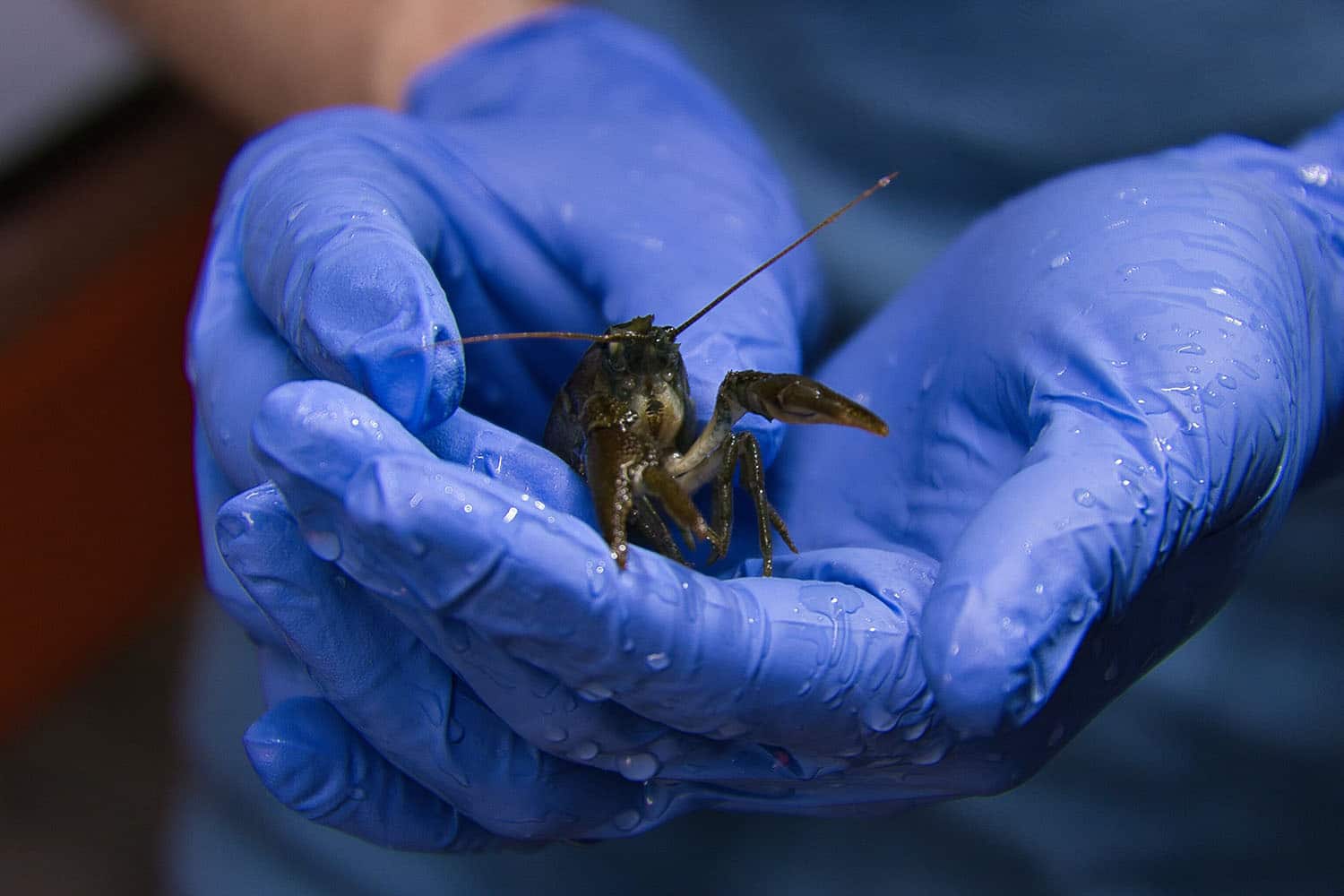White-clawed crayfish
Common name: White-clawed crayfish
Scientific name: Austropotamobius pallipes
In the sparkling clear waters of Hampshire’s chalk streams lives a special little creature – the white-clawed crayfish.
Crayfish are not fish but crustaceans and belong to a group called decapods meaning they have ten legs, just like lobsters and crabs.
White-clawed crayfish are ‘ecosystem engineers,’ species that modify, maintain, or create habitats. Their diet helps keep rivers and streams clean and healthy for all species, as they consume invertebrates such as worms and snails, carrion, water plants, and dead organic matter. They are also a ‘keystone species,’ meaning they are vital to the overall ecosystem, serving as prey for herons, otters, and even dragonfly larvae.
Fast Facts
-
Status
Endangered
-
Size
Up to 12cm (excluding claws) but most often less than 10cm.
-
Incubation
Approx. 9 months
-
Young
The mother carries 20 - 160 eggs.
-
Lifespan
8 - 15 years
In the wild
White-clawed crayfish are omnivores and are known as ‘ecosystem engineers’ – species that modify, maintain, or create habitats. Their diet helps keep the rivers and streams clean and healthy for all species, eating invertebrates such as worms and snails, carrion, water plants and dead organic matter.
White-clawed crayfish are found in freshwater rivers, streams, reservoirs, canals, and lakes with clean, mineral-rich, and oxygenated water. Their range extends across the UK and parts of Europe, including Austria, Bosnia and Herzegovina, Croatia, France, Germany, Italy, Montenegro, Slovenia, Spain, and Switzerland. They are Britain’s only native crayfish species.
Hampshire is home to many of England’s globally rare chalk streams, with 85% of the world’s chalk streams found in the UK. As a keystone species, white-clawed crayfish play a vital role in maintaining the health of these freshwater ecosystems. However, they are rarely seen due to their nocturnal nature, spending daylight hours hidden under rocks, tree roots, and crevices.
Their presence in a waterway is often a sign of a healthy and balanced freshwater habitat.
White-clawed crayfish breed in autumn, and females carry their eggs externally for about nine months. A ‘berried’ female can hold 20 to 160 eggs, though most carry fewer than 100. Eggs hatch in early to mid-summer, and juveniles remain attached to their mother’s tail until they are independent. However, they are highly vulnerable to predation at this stage.
Like other crustaceans, crayfish grow by moulting—shedding their hard outer shell to allow for new growth. This process is similar to how snakes shed their skin.
White-clawed crayfish were once widespread and common throughout England and Wales, but since the 1970s they have suffered a dramatic decline, reflecting the 50-80% decline seen across its global range. The alarming loss of this species across the UK is primarily due to competition and predation from a larger invasive non-native crayfish species, the signal crayfish Pacifastacus leniusculus from North America, which also carries a deadly crayfish plague which can quickly wipe out our native species.
If a crayfish loses a claw or leg during a fight or a predator attack, it can regrow the missing limb!
White-clawed crayfish and their habitats are protected under UK and European laws, with designated Special Areas of Conservation established to safeguard them.
Developed in partnership with Hampshire & Isle of Wight Wildlife Trust and Bristol Zoological Society, Marwell’s dedicated Crayfish Breeding Centre will play a crucial role in the Southern Chalkstreams Project, an initiative which protects and restores these fragile freshwater ecosystems, with a focus on the endangered white-clawed crayfish. The facility provides a biosecure environment to rear crayfish before their release into protected ark sites, helping establish new populations of the species.


